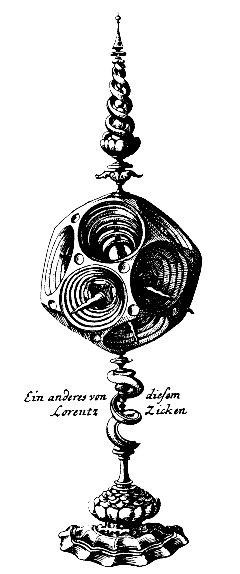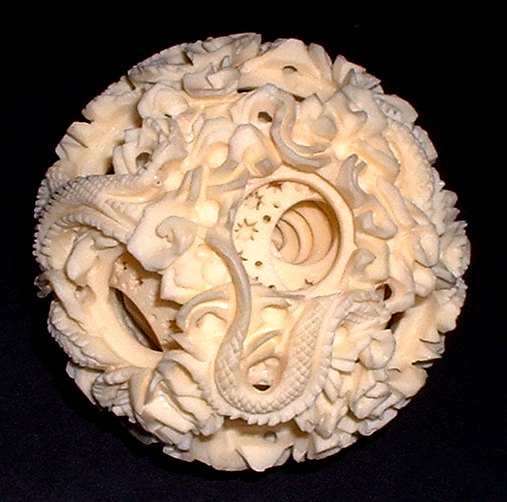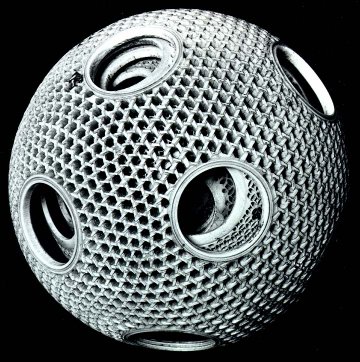 Polyhedral
Turnings
Polyhedral
TurningsThis image at right was scanned from the article by Tomlow listed in the references, which contains additional material on polyhedral turnings. For a detailed history, see Joseph Connors, "Ars Tornandi: Baroque Architecture and the Lathe," Journal of the Warburg and Courtauld Institutes, LIII, 1990, pp. 217-36. The techniques for turning nested spheres were apparently invented in Milan by Giovanni Ambrogio Maggiore in 1582. Interestingly, turning was considered a noble hobby, and many gentlemen and kings worked lathes as a leisure activity, e.g., Lorenz Zick taught Emperor Ferdinand in Vienna. For instructions to a lathe craftsperson on how to make these and related polyhedral forms, see the book by Holtzapffel.
Nested polyhedral balls are still made by artisinal wood
turners. Below is one given to me by Claude Lethiecq,
consisting of three concentric spheres, each with 12 large
openings, plus a dodecahedral doodad inside.
And some are turned commercially in Hong Kong. Below is an image of one with 14 holes, positioned as the vertices of a rhombic dodecahedron. This one is 3 inches in diameter and has 12 nested spheres, with the outer one carved into dragons.

Below is another interesting example of a turned ivory carving with dodecahedrally positioned openings, and nicely carved surfaces, artist unknown. Notice the occasional five-fold openings in the "weave".
